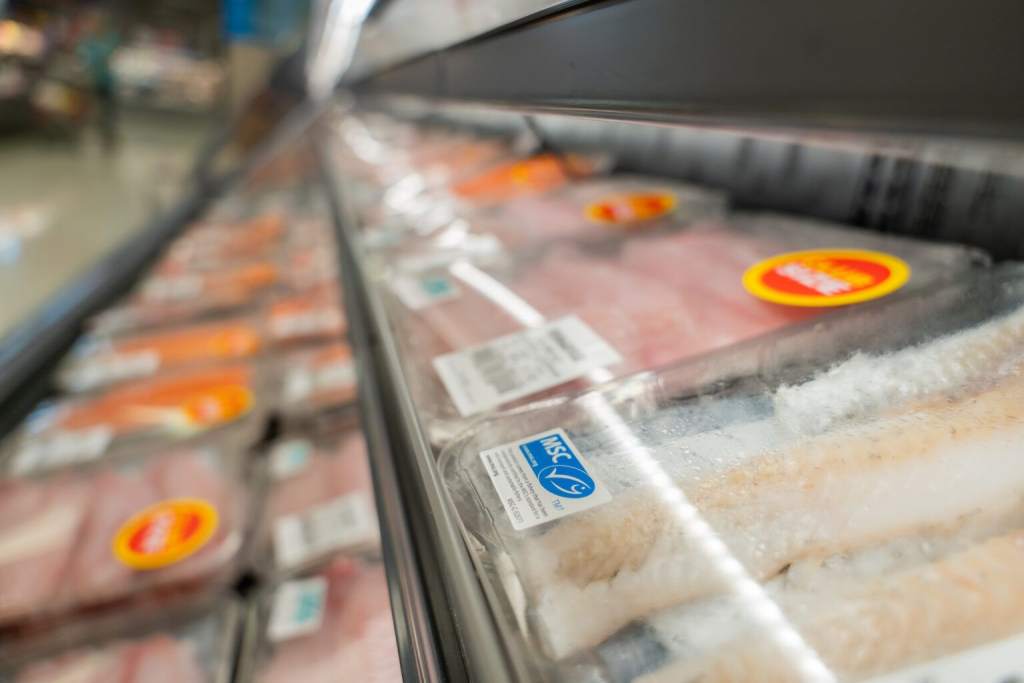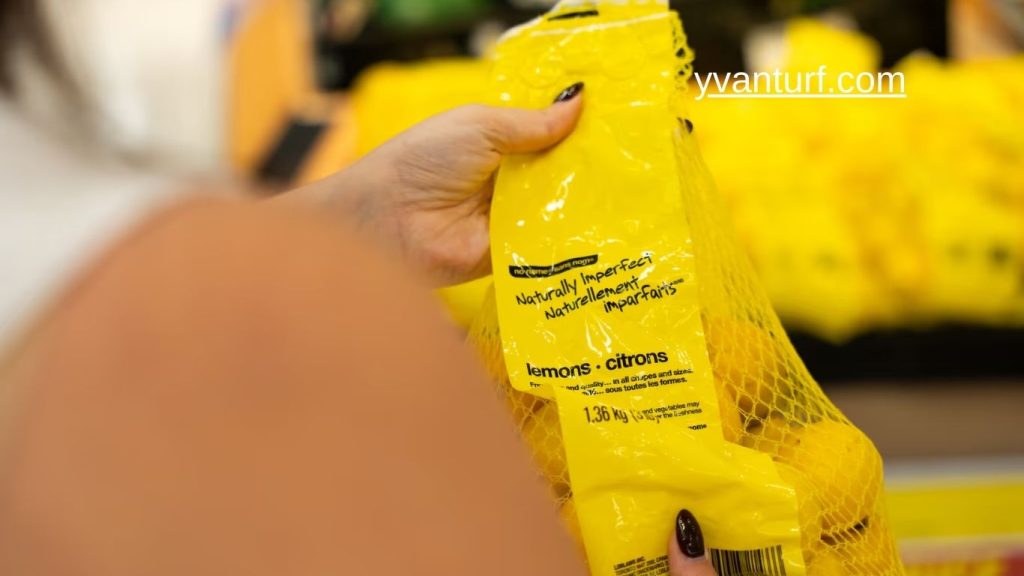When it comes to the weekly grocery trip, more Canadians are realizing the power of shopping local and sustainable. Supporting Canadian growers, producers, and eco-friendly initiatives not only strengthens the economy but also reduces waste and protects the environment. The need has never been greater: research shows that 46.5% of all food in Canada is wasted each year, creating serious environmental, social, and financial impacts.
That’s why small changes in how you shop can make a massive difference. And sometimes, inspiration comes from those who are already making sustainable living a priority. Enter Sean and Lacey, a Vancouver-based influencer couple known as That Vancouver Couple. Their weekly grocery runs at the Real Canadian Superstore are filled with smart, eco-conscious choices that prove sustainability doesn’t have to be complicated—or costly.
Here’s how they do it—and how you can, too.
Skip the Picture-Perfect Produce

One of Sean and Lacey’s first strategies is surprisingly simple: embrace imperfect produce. Instead of reaching for flawless fruit and vegetables, they opt for no name Naturally Imperfect strawberries, lemons, and other produce.
These items may not win beauty contests, but they taste just as fresh and flavorful. More importantly, they prevent perfectly good food from being wasted simply because it isn’t the “right” shape or size.
This program has had a massive impact. In 2024 alone, Loblaw’s initiatives diverted over 80,000 tonnes of food from landfills. That’s food put back into the hands of consumers rather than wasted.
On top of that, Sean and Lacey also use the Flashfood app, which offers up to 50% off grocery items nearing their best-before date. It’s a win-win—less food waste, more money saved.
“Sustainable choices don’t have to mean changing your routine or spending more,” the couple explains. “Sometimes, making better choices is as easy as doing your regular grocery run.”
Why it matters:
- Reduces food waste and landfill emissions
- Saves money on fresh groceries
- Supports farmers by maximizing produce use
Read the Signs and Choose Local & Sustainable

Another tip from Sean and Lacey: pay attention to the signs. At Real Canadian Superstore, local and sustainably sourced products are clearly labeled, making it easier to support Canadian growers and eco-friendly practices.
Take seafood, for example. For their famous seafood pasta dinner, Sean and Lacey go straight for sustainably sourced shrimp. These products are not only delicious but also certified to support responsible fishing practices that protect ecosystems.
Lacey points out, “All of these products are clearly marked to ensure you know what to grab.” That simple act of choosing responsibly sourced seafood means you’re helping protect marine life and reduce food waste.
Why it matters:
- Protects ecosystems and wildlife
- Strengthens Canadian industries
- Empowers shoppers with transparent choices
Look for the Fine Print: Packaging Counts Too

It’s not just about what you buy—it’s also about how it’s packaged.
Lacey pays close attention to packaging and celebrates Loblaw’s shift from Styrofoam to recyclable PET clear trays for products like shrimp, salmon, and tilapia. This small but powerful change reduces landfill waste while giving shoppers more eco-friendly options.
And it doesn’t stop there. At Loblaw banner stores, Canadian-made and produced items are clearly marked with bold signage. Whether it’s seafood, produce, or packaged goods, it’s easier than ever to identify sustainable options during your normal grocery run.
“We love that our local Real Canadian Superstore offers sustainable seafood and Canadian-made products built right into your regular shopping experience,” says Lacey.
Why it matters:
- Cuts down on landfill waste
- Encourages recycling
- Supports Canadian manufacturing
Breaking the Myth: Sustainability Doesn’t Mean Higher Costs
One of the biggest misconceptions about eco-friendly shopping is that it costs more. Sean and Lacey prove that’s not true. With programs like no name Naturally Imperfect, Flashfood, and Loblaw’s sustainable packaging initiatives, making better choices often saves money.
In fact, sustainable shopping can lower your grocery bill while increasing the positive impact on the planet. You don’t have to visit expensive specialty stores—affordable, eco-friendly options are already built into major Canadian retailers.
Why Sustainable Grocery Shopping Matters
Shoppers might wonder: do these small changes really make a difference? The answer is a resounding yes. Here’s why:
- Food waste is a climate issue. When food ends up in landfills, it produces methane—a greenhouse gas more potent than carbon dioxide.
- Waste hurts communities. Reducing waste means more food availability, supporting food banks and reducing food insecurity.
- Local support fuels growth. Buying Canadian-grown, raised, or made products keeps money circulating in local economies.
- Sustainable habits scale. If every household adopted just one or two eco-conscious practices, the national impact would be extraordinary.
How to Get Started Today
If you’re inspired by Sean and Lacey’s approach, here are five easy ways to start shopping more sustainably on your next grocery trip:
- Choose imperfect produce – Save money and reduce waste.
- Check product signs and labels – Support local and sustainable goods.
- Download the Flashfood app – Shop discounted items nearing best-before dates.
- Opt for recyclable packaging – Avoid products in Styrofoam or unnecessary plastics.
- Prioritize Canadian-made products – Strengthen the local economy and reduce transportation emissions.
Frequently Asked Questions:
Why is shopping local and sustainable important in Canada?
Shopping local supports Canadian farmers, reduces food miles, lowers carbon emissions, and strengthens the national economy while minimizing waste.
What is “imperfect produce,” and why should I buy it?
Imperfect produce includes fruits and vegetables with minor cosmetic flaws. They taste just as good, cost less, and help reduce food waste.
How does the Flashfood app support sustainable shopping?
Flashfood lets you buy grocery items nearing their best-before dates at discounts of up to 50%, preventing waste and saving money.
How can I identify local and sustainable products at the store?
Look for clear signage, certification labels, or “Canadian-made” tags. Stores like Real Canadian Superstore make eco-friendly options easy to spot.
Are sustainable choices always more expensive?
No. Many sustainable programs in Canada are designed to save shoppers money, like Naturally Imperfect produce and Flashfood discounts.
What role does packaging play in sustainable grocery shopping?
Choosing recyclable or eco-friendly packaging helps reduce landfill waste and supports circular economy practices.
Can small changes in grocery shopping really make a difference?
Yes. Every purchase of sustainable produce, responsibly sourced seafood, or recyclable packaging contributes to less waste, lower emissions, and stronger communities.
Conclusion
Sustainable shopping doesn’t have to be overwhelming or expensive. As Sean and Lacey demonstrate, small, mindful choices—like embracing imperfect produce, selecting sustainable seafood, and choosing recyclable packaging—can create a meaningful impact on both your wallet and the planet. By supporting local farmers, reducing food waste, and making eco-friendly swaps at stores like Real Canadian Superstore, Canadians can turn everyday grocery trips into powerful opportunities for change.

